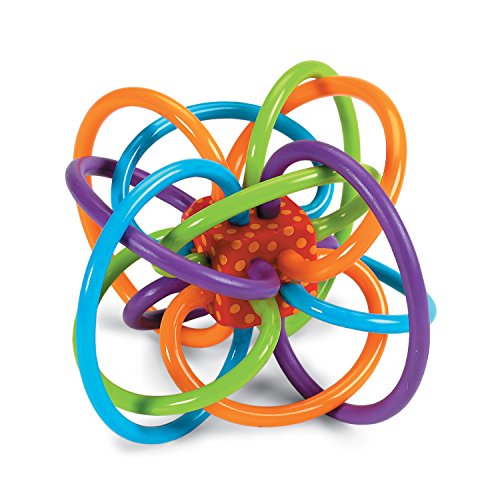Treating Teething Rash: Advice From Experts
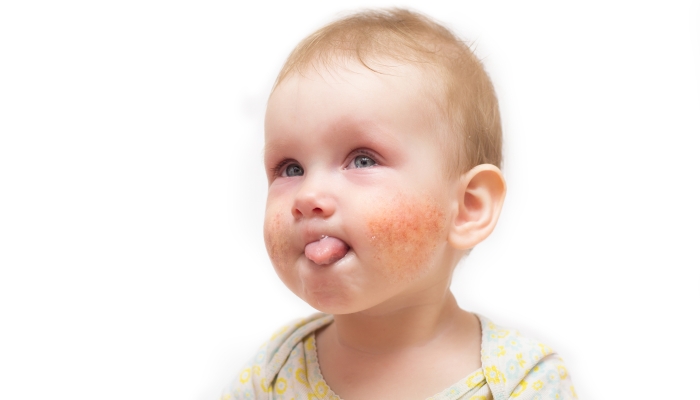
This post may contain affiliate links; please see our terms of use for details.
- A teething rash is a skin condition in babies resulting from drool irritating the skin during the teething years.
- Drool rash can be easily prevented by keeping clothing dry from excess saliva.
- Applying a skin barrier cream to areas that frequently get wet from drool will help to prevent teething rash.
Babies seem to develop numerous skin issues throughout early childhood. Some are more concerning, while other rashes are just plain bothersome and ugly.
At some point in their young lives, most babies suffer from irritated skin around their mouth and chin caused by copious saliva associated with teething. This skin condition is termed teething or drool rash.
Baby teeth begin to erupt between the ages of 6 and 12 months. With the teething process comes a stream of saliva that can cause chapped areas on baby’s sensitive skin around his mouth and chin.
This pool of drool can also dampen your child’s clothing and bedding, causing further skin irritation as the baby’s neck and face rub against saliva-saturated clothes and sheets.
I recall my youngest daughter, who had very fair and sensitive skin, sporting bright red patches of irritated, dry skin on her cheeks and chin while teething. Our other daughter, who seemed to have hardier skin during this phase, was not troubled at all by teething rash. Her dark skin may not have been as sensitive, thus avoiding a drool skin rash during her infant teething stage.
Knowing how to recognize and treat your baby’s drool rash will help to ease the discomfort that accompanies this condition. By applying prevention measures, you and your little one might even avoid this issue altogether. Fortunately, treating teething rash is one of the more straightforward baby health challenges you will face as a parent.
What Does a Teething Rash Look Like?
Teething rashes are easy to spot on your baby’s skin. You will note red, irritated skin around the baby’s chin, mouth, neck, chest, and even on the cheeks and tip of his nose. Anywhere that excess drool and wetness from saliva dampen your baby’s sensitive skin can create an environment for teething rash.
Drool rash may also make your baby’s skin:
- bumpy
- raised
- chapped
- dry
The timing of the rash is another indicator that your child’s rash may be caused by excess drool. Since dribbling saliva is the cause of this skin condition, you can expect to see eruptions during the teething period when more saliva is produced while new teeth make their way through the gums.
Some may confuse teething rashes with eczema, which looks similar to drool rash. The difference is where the eruption presents itself on your baby’s skin. While drool rash tends to pop up in moist areas where baby dribbles excess saliva, food, and milk, such as around the mouth, eczema can be found on the scalp, elbows, and knees, in addition to the face.
Additionally, eczema can be weepy, while teething rashes are generally dry.
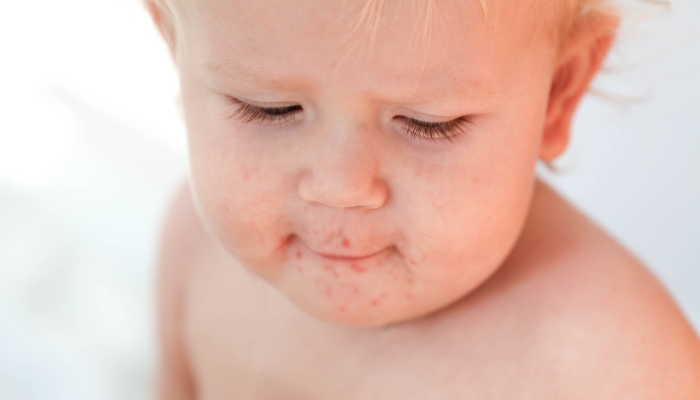
What Causes Drool Rash?
Other than wetness irritating baby’s skin, are there any other factors that lead to teething rash? The answer is yes. Saliva contains a digestive enzyme that’s irritating to the skin. When the enzymes dry on saliva-dampened areas such as your baby’s cheeks, a red rash, and perhaps a slightly foul smell may occur.
Is a Teething Rash Contagious?
Fortunately, a drool rash is not contagious to others. In addition, the inflamed patch can not spread to other spots on your baby’s skin. The irritated areas should stay confined to the areas where drool tends to accumulate.
Tips to Prevent Teething Rash
There are a few simple solutions to help control and prevent drool rash. Since it is unlikely that you can turn off the faucet of saliva that happens during the teething process, strategies to protect the skin and cut down on wet clothing are your best defense.
As soon as your child begins to cut his first tooth and you note that excess saliva and wetness are a result, you should apply the following measures to prevent drool rash.
- Change wet clothing and bedding where drool accumulates frequently.
- Utilize drool pads and bibs during the teething process.
- Apply a thin layer of petroleum jelly or other barrier creams to baby’s clean skin to form a protective barrier between saliva and the skin. Do this multiple times a day and especially before naps and bedtime.
- Do not rub the rash when washing the sensitive area during bath time. Instead, gently keep baby’s skin clean with a soft cloth and pat dry.
Although you can’t prevent your baby from drooling, you can stamp out the problem before it becomes uncomfortable for your baby.
Experts’ Advice on How to Treat Teething Rash
Since teething can last until babies are almost 3 years old, knowing how to treat drool rash can help save your little one much discomfort and unsightly appearing red blotches on their cheeks, mouth, chin, and chest. Although we all love pink-cheeked babies, drool rash on baby’s skin is not cute!
Experts at the Cleveland Clinic reassure parents that teething rash is harmless, but if this issue erupts, keep the area clean and dry and apply a skin barrier cream such as vaseline for protection and healing.
Seattle Children’s Hospital also informs us that rashes from teething may subside a bit by applying specific teething tips to aid in the course of teething, such as:
- With a clean finger or soft cloth, perform a gentle gum massage on your baby’s swollen gums.
- Offer (refrigerator) chilled teething toys or a soft wet cloth to chew on.
- BABY TEETHING TOY MADE FOR LITTLE HANDS: The Winkel features a mesmerizing maze of soft, continuous BPA-free teething tubes, and can be refrigerated for additional soothing comfort – a perfect baby chew toy for tiny hands.
- DEVELOPMENTAL BABY TOY: Babies are instantly drawn to this colorful and lightweight infant toy. The Winkel promotes clutching and two-handed play while the center cube with tapered corners encases a quiet but pleasing baby rattle to provide auditory stimulus.
- TIME-HONORED CLASSIC: With over 25 years engaging babies and soothing even the fussiest of teethers, the Winkel is a perfect shower gift for new moms. Safe and dependable, this classic toy for babies has received numerous accolades and has proven to be a true baby go-to and parent must-have.
- BABY TOY FOR NEWBORNS AND UP: Safety rated for newborns and up, the Winkel measures 5″ x 4″ x 3.5″ and easily tucks into the diaper bag when baby is on the go.
As a pediatric nurse and family nurse practitioner, I can attest that by applying these simple measures, you can prevent or at least cut down on drool rash.
I must admit that as a mother of 2 dribbling babies, I still failed to thwart my youngest daughter’s baby’s rash, even with my best attempts. So my example illustrates that drool rash can still occur even if you are diligent in your baby’s skincare. However, your preventative measures will certainly lessen the severity of the rash.
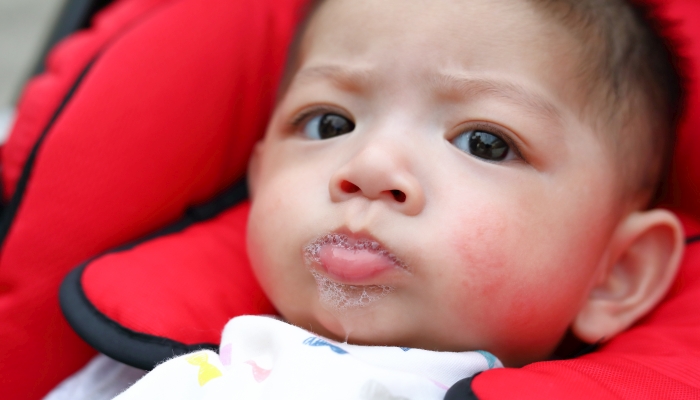
When to See a Doctor
Although teething rash is one of the health conditions that your child may experience that is not an emergency, you still should consult a medical professional in the following circumstances:
- Baby’s irritated skin is not improving or is getting worse after applying the tips for prevention and treatment listed in this article.
- Skin is cracked or bleeding.
- The drool rash is spreading.
- Your baby develops a fever.
- You are unsure if the skin condition is a teething rash.
- Your baby is unusually fussy.
- You notice hives (a possible allergic reaction).
Since typically, your child may be fussy when teething, it may be hard to discern which is the culprit, the rash or the teething (which is more likely). Your baby’s doctor can help you sort out the cause and provide helpful tips to alleviate both conditions.
Other Concerns Associated With Teething Rash
Diarrhea and sleep disturbances can also be unwanted consequences of teething and the drool that comes with the event.
We are all aware that pain associated with teething can keep us and our babies up through the night. Although teething rash is relatively painless, chapped skin rubbing against fabric can further irritate the skin and become uncomfortable, adding to sleep disruption.
Since we all desperately want (and need) our teething babies to sleep as well as possible, applying every trick in the book to keep baby happy, dry, and comfortable is welcomed.
It may surprise some that the copious drool from teething also causes loose stools in babies. Digestive enzymes in baby’s drool work in the gastrointestinal tract to create baby poop that is looser than usual. Although experts disagree on this relationship, many sources attribute excess drool as the culprit.
FAQs
Now that we know that saliva can cause a rash on your teething baby’s skin let’s investigate other questions that many moms may ask about this important topic.
Does a teething rash go away on its own?
You do not need a prescription from the doctor to clear up your baby’s rash. It can go away on its own but is unlikely to completely resolve if you do not apply the measures discussed above.
Is a teething rash painful for the baby?
In general, teething rashes are not painful. However, if the disrupted skin becomes excessive or irritated from rubbing against clothing, toys, sheets, etc., your baby may fuss due to discomfort.
Is a drool rash itchy for the baby?
A teething rash is not itchy. If your baby seems to be scratching or rubbing the area, you may be dealing with another type of rash where itching is a common symptom. It’s best to consult your provider if you suspect the skin rash is itchy.
Will my baby develop a fever due to a teething rash?
Teething may cause a slight increase in temperature but not enough to be considered a fever. Therefore, your child should not have a fever when teething or from the rash that comes with it.
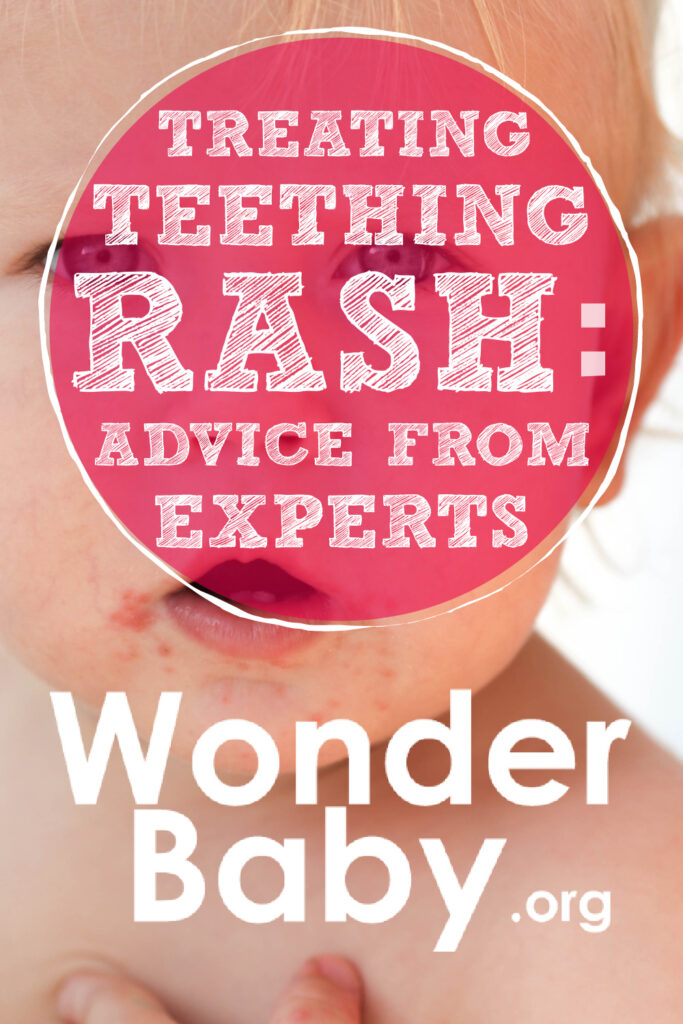
The information WonderBaby provides is not intended to be, and does not constitute, medical or other health advice or diagnosis and should not be used as such. Always consult with a qualified medical professional about your specific circumstances.
Related Posts

Eye Conditions and Syndromes, Visual Impairment
Neuralink Announces Plans to Restore Sight to the Blind with Brain Chip
Elon Musk’s company Neuralink has announced plans to begin human trials of its new “Blindsight” brain chip by the end of 2025.

Health & Nutrition
Can Baby Skin Care Products Expire?
Is that forgotten tube of diaper rash cream still safe to use? Learn more about the expiration dates of popular skin care products for infants.

Health & Nutrition
Boosting Immunity in Kids: 3 Tips for a Healthy Winter
Parents can help boost their kids’ immunity during cold and flu season by maintaining healthy eating, sleeping, and exercising habits in the winter.
